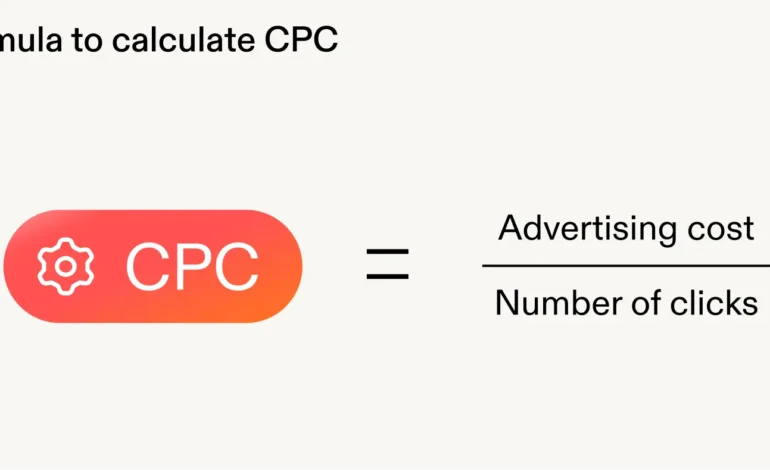How to determine your correct CPC (Cost Per Click) ad spend

To invest or not to invest, that is the question…
One of the most important tasks marketers face is determining the budget for different sections of the digital strategy. If you’re not prepared, it can give you the impression that you’re playing roulette or throwing darts at a target blindfolded with your online marketing. But the truth is that calculating the right ad spend is much more science than art.
How to determine CPC ad spend?
Estimating the marketing investment you need to achieve optimal results depends on knowing the right formulas and applying them with common sense. To help you get your next budget right, today I want to share with you Brett Farmiloe’s tips for determining your right CPC (Cost Per Click) ad spend. Let’s go step by step…
Step 1: How to Calculate the Leads and Traffic You Need
Logically, the main objective of CPC marketing investment is to achieve a business objective, usually linked to sales. Therefore, to know how much we should invest, the first thing to do is to calculate the traffic we need to achieve this goal.
The formulas are very simple:
- (Desired revenue / Sales period) / Average sale = Number of customers
- Number of customers / Conversion rate = Number of leads
- Number of leads / Conversion ratio to visits = Number of visits
Let’s see it with an example. Let’s say your annual revenue goal is $1 million, and your sales period is one month, i.e., there are 12 sales periods per year. The average sale is 1000 euros. Then:
- (€1,000,000 / 12) / €1000 = 83.33 customers per month
To get a million euros in annual revenue, you need about 84 customers per month. Now, let’s assume that your sales team manages to convert 20% of leads into customers.
- 83.33 customers / 20% = 416.66 leads per month
And now, for the last step, let’s assume that 5% of visits to your website through cost-per-click ads convert into leads, for example, filling out a form to leave you your contact details. This means that:
- 416.66 leads / 5% = 8,333.33 visits per month
That is, in this example, your monthly goal would be to generate 8,334 visits, of which 417 would become leads and 84 would become customers, resulting in an income of one million euros per year.
The numbers add up, right? But we’re still missing some important data, so let’s look at the next step.
Step 2: CPC ad spend within your overall strategy
To determine the right ad spend on cost-per-click ads, you need to consider how they work within your digital marketing ecosystem. Most brands use a variety of channels and strategies to drive traffic and conversions.
For simplicity, let’s think of CPC as a way to fill in the “gaps” in your current digital marketing. That is, we’ll use paid advertising to generate traffic that we haven’t gotten through other channels like search engine optimization, email marketing, content marketing, social media, etc.
Therefore, you need to sit down and make an analysis of the results you are achieving with all these channels and how they contribute to your overall objectives.
For example, let’s assume that you achieve 75% of your revenue goal through SEO, email marketing, content marketing, and social media. This means that you have 25% left to cover.
According to the calculations we have made in the previous section, 25% of your goal is 250,000 euros per year. To achieve this, you need to generate about 2084 visits per month, which translates into 105 leads and 21 customers. We’re getting close to the magic number of ad spend, but there’s still more to consider.
Step 3: CPC Competitor Analysis
Just as investing in CPC marketing is a part of your digital marketing ecosystem, to be competitive, you also need to consider the context in which you will be making your investment, i.e., who your competition is and what they are doing. How much are your competitors spending on cost-per-click advertising, and what keywords are they targeting?
Spying on your competition is as simple as possible thanks to tools like SpyFu or SEMRush. Simply enter the URL of your competitor’s website, and the tool will automatically calculate an estimate of their activity on Google AdWords, including monthly spend and the keywords they target.
The key here is to analyze at least 5 companies to have a complete view of your sector. Make a list of well-known competitors. Then, think about the most obvious keywords for your industry and enter them into Google. Which companies have placed ads? Add them to your list, too.
In our hypothetical example, let’s assume that a competitor is spending 3,000 euros per month, another 4,500 euros, another 10,000 euros, another 2,000 and another does not invest in cost per click. With this data, a common method to know what your advertising investment should be is to discard the highest and lowest numbers and average the rest, which would give us a budget of 3,166 euros per month is enough to be competitive in the sector.
But this figure alone is not of much use, since what we need is to achieve the traffic objectives that we set in the previous section. To find out if the numbers fit, we need to take it a step further.
Step 4: Ad spend based on traffic and keywords
The question we are going to answer in this step is: do the keywords we want to invest in have a high enough search volume and a low enough cost per click to achieve our business goal while staying within budget?
There are tons of tools for keyword research. One of the most useful and useful (as well as free!) is the Google AdWords keyword planner, available to any user of an AdWords account. Of course, if you want to see detailed search estimates (rather than ranks in order of magnitude), you’ll need to have an active cost-per-click campaign on Google.
Enter the keyword you want to invest in and analyze the data. To do this, there’s one more piece of information we need to know: the click-through rate on your AdWords ads. If you’ve already run campaigns in this tool, you can make an estimate based on previous results. If not, you will have to put a fictitious figure and modify it later. Let’s assume that the click-through rate is 5%.
If our keyword has 24,000 searches per month and a cost of €2 per click, this means that we will get about 1200 visits per month at a cost of €2400. To reach the 2,084 monthly visits we had set as a goal, we need to add more keywords.
We can also see thatforf €2 per click, generating those 2,084 visits would cost us €4,168 per month, which is more than what we had estimated in the previous section. We can increase advertising investment, try to increase visits from other channels, or try to improve costs per click by optimizing campaigns.
To finish this point, I leave you a video that I have recorded where I give recommendations on how to set your budget or your advertising investment.
Ready for action!
If you’ve followed the steps above, you already have a “scientific” idea of what your correct CPC ad spend is. The adventure has just begun! To continue optimizing your budget, keep these ideas in mind:
- For simplicity, we have considered the overall revenue figure as a target in these calculations. But to know if your CPC marketing investment is really profitable, what you need is to calculate the return on investment. What is the margin that this income leaves you? Is it higher or lower than the advertising investment in cost per click? And how does it compare to other channels (email marketing, content marketing, etc.)?
- To improve your click-through rate on your ads, you’ll need to fight to be at the top of search results. Several factors play a role, mainly bids and Ad Quality Score. In turn, raising the quality score can decrease costs per click, which also makes ad spend more profitable. In short, you’ll need to work on optimizing your listings as much as possible.
- And finally, remember that you can also increase the return on your investment by improving the conversion rate to leads (through better landing pages) or the conversion rate from leads to customers. Good luck!










